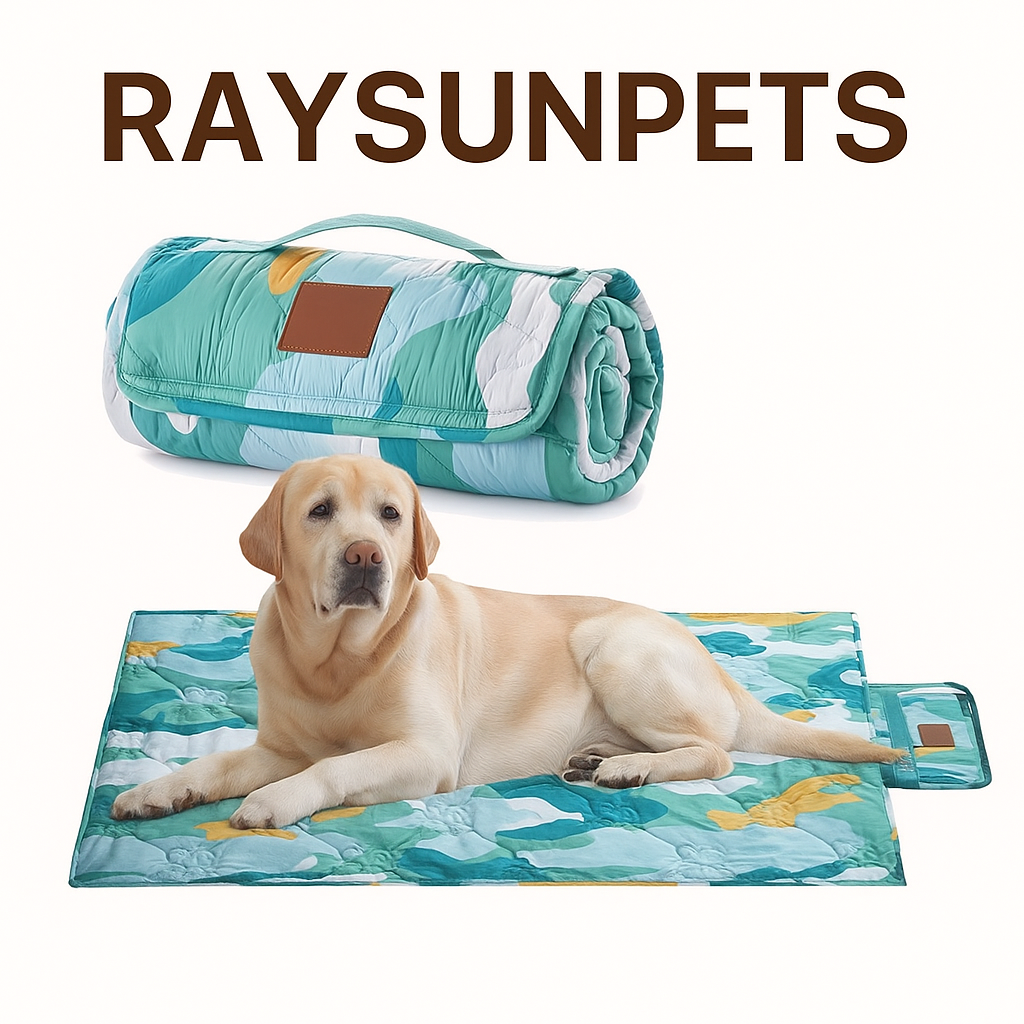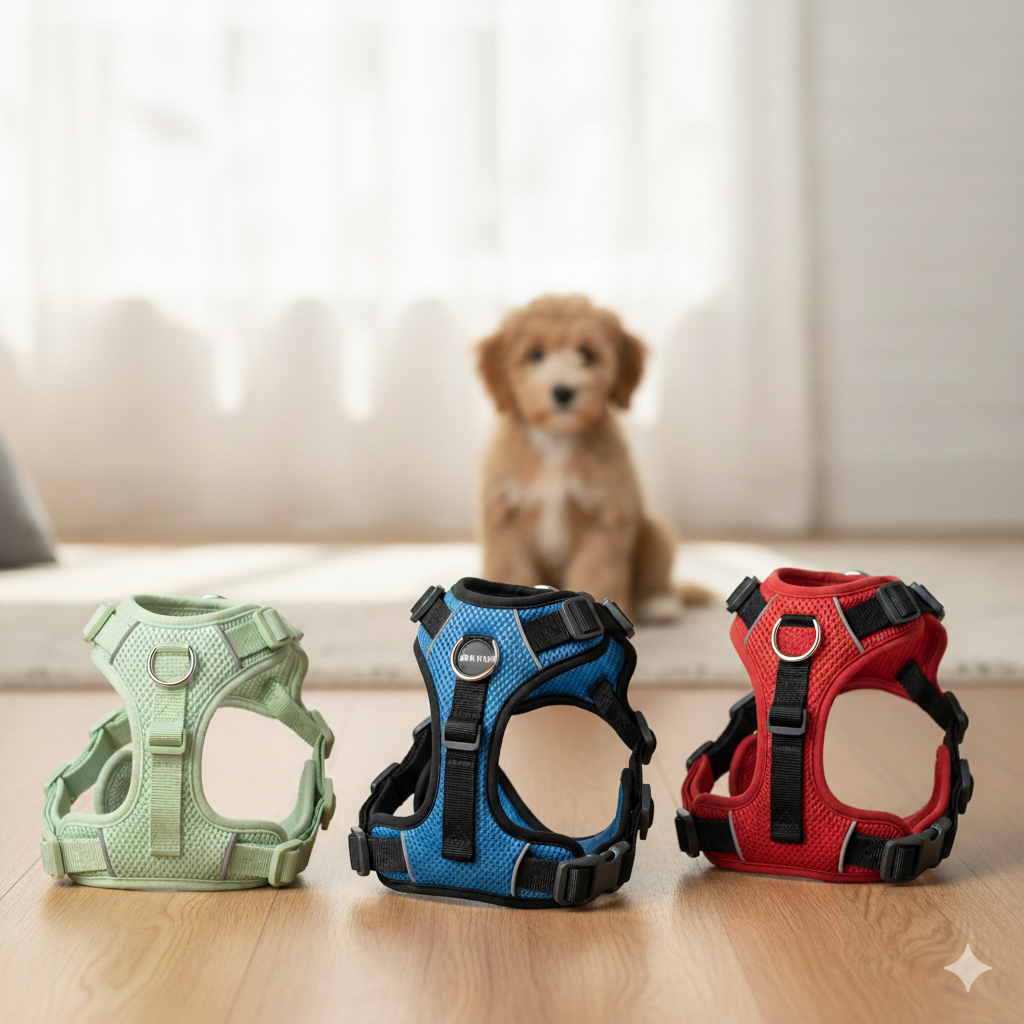Puppies can often pull or choke on collars, leading to injuries and long-term behavioral issues. Selecting the right gear can help prevent this.
Deciding between a harness and a collar for a puppy has a significant impact on safety, comfort, and training. Making the wrong choice can result in harm or setbacks in obedience.
Let's dive into what trainers and experts recommend for raising a confident, well-behaved puppy.
Are Harnesses Always Better for Puppies?
Many pet parents assume that a dog harness is always the superior option for a puppy, but the reality is more nuanced. Harnesses, particularly those designed for puppies, distribute pressure evenly across the chest rather than concentrating it on the neck, which is beneficial for young and fragile dogs. This feature makes it easier to control lively puppies without putting them at risk of tracheal injuries. Moreover, a properly fitted dog harness with a no-pull design can help minimize sudden lunges or abrupt movements, benefiting both the puppy and the owner. However, despite these advantages, some puppies may become overly dependent on the feeling of a harness, which can impede leash training progress. Ultimately, the best choice depends on the dog's size, breed, and temperament, and a tactical dog harness may not always be the optimal solution.
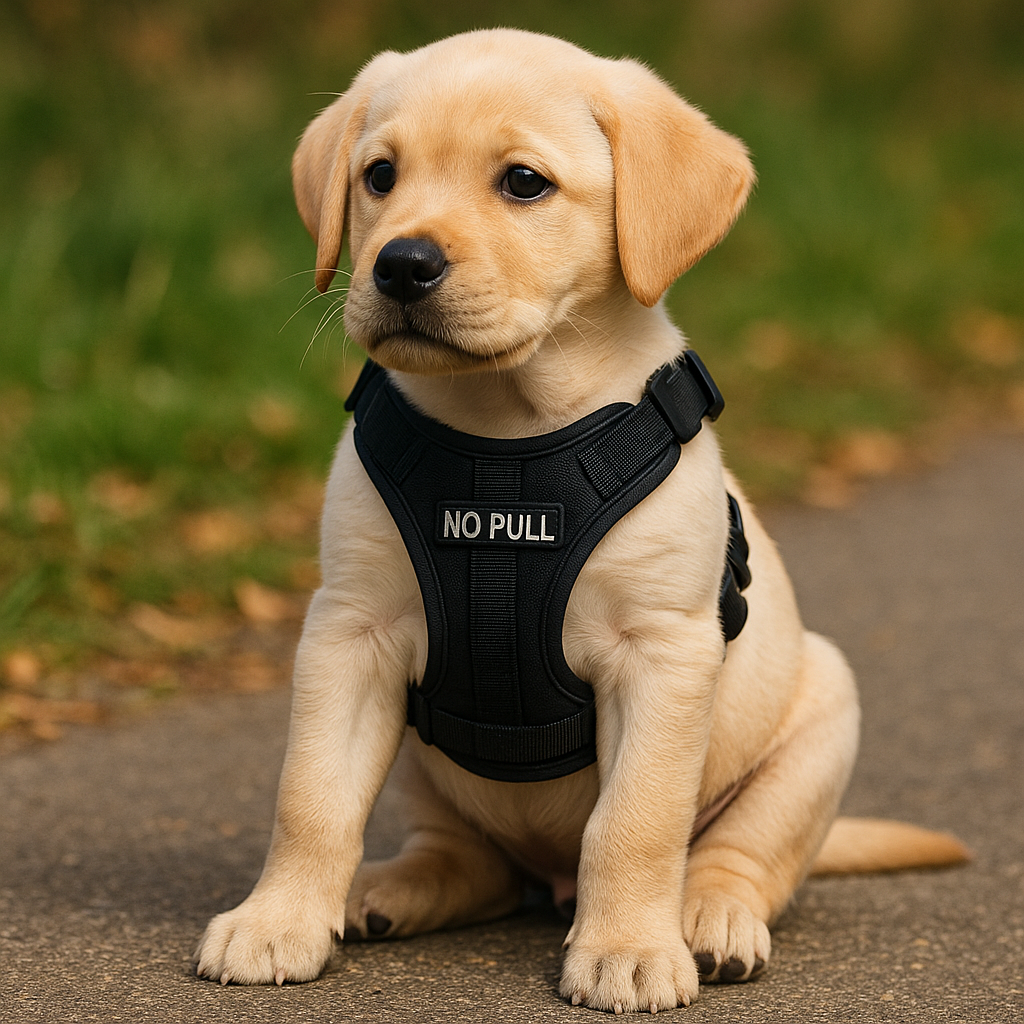
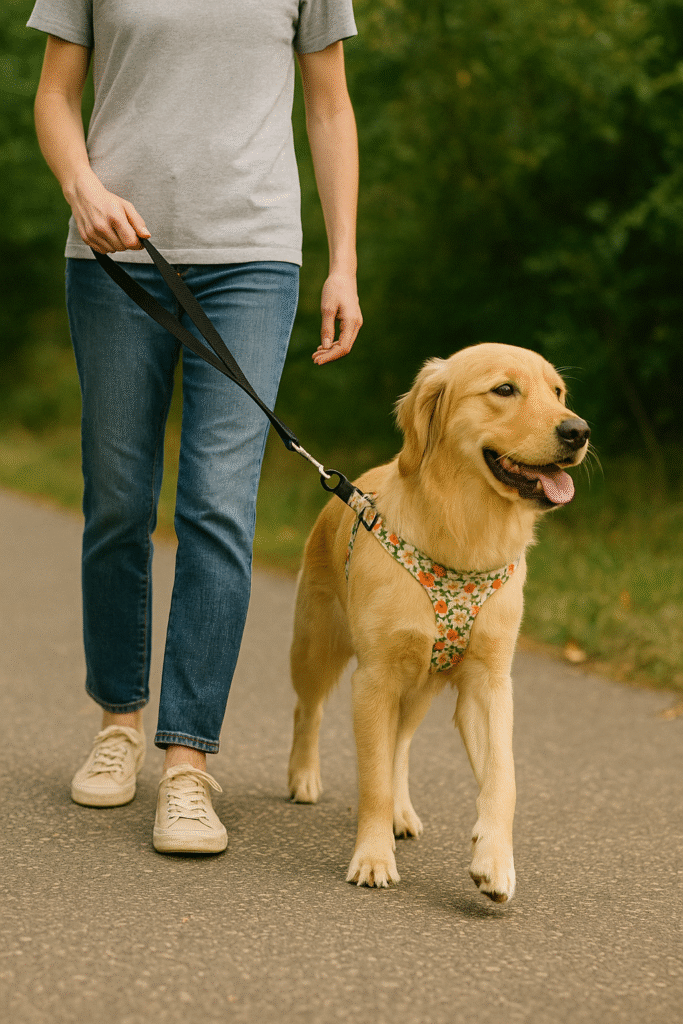
Why Not Just Use a Collar?
While dog collars are a classic choice for pets, using them for puppies requires careful consideration. A puppy's neck is delicate, and excessive pulling can result in harm when using a collar. Certain types of collars, such as training or shock collars, are intended for advanced behavior correction and are not suitable for young pups who are still in the early stages of learning. Nevertheless, when utilized appropriately, a regular flat dog collar can help instill proper leash etiquette from a young age and facilitate the attachment of identification and GPS devices, such as a dog GPS collar. Nonetheless, in most cases, collars should be used in conjunction with other training tools and not relied upon as the sole means of restraint, particularly during the training phase.
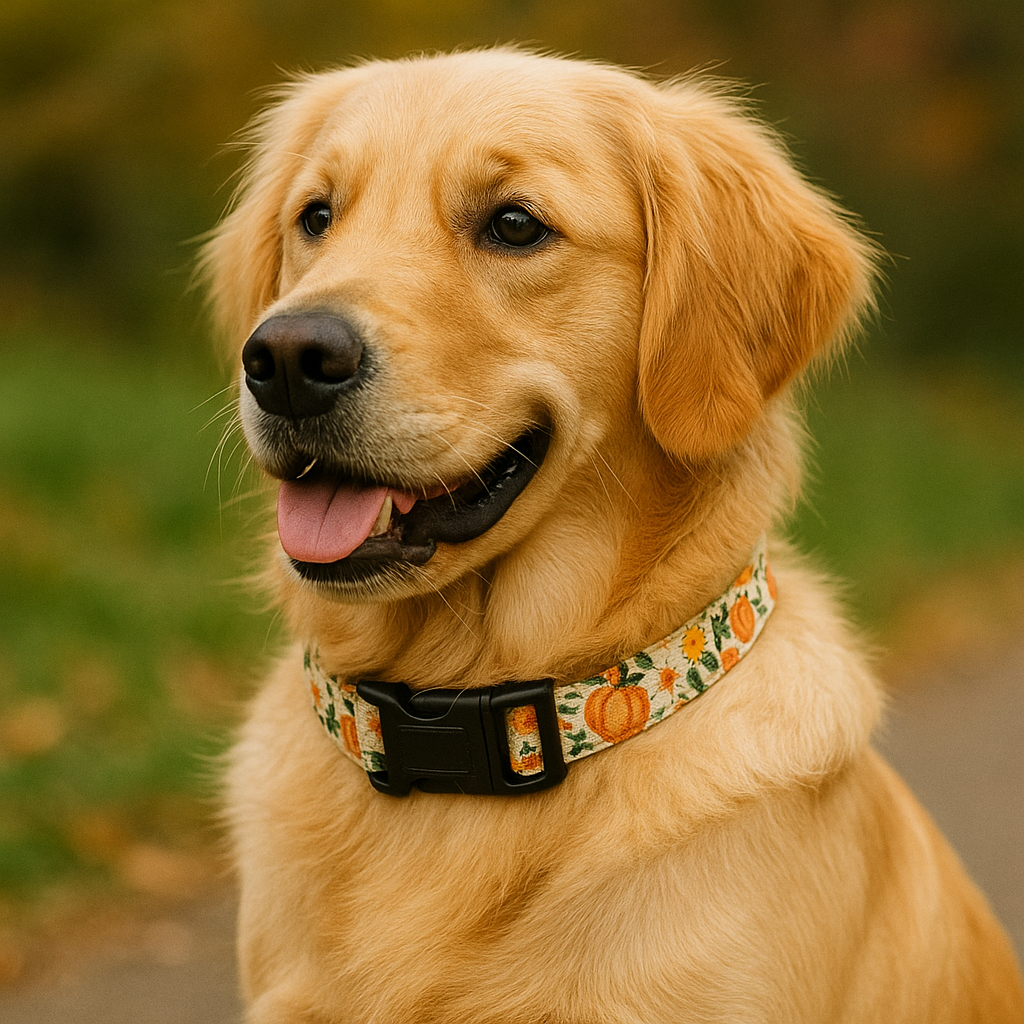
What Do Professional Trainers Recommend?
Professional dog trainers often advise starting with a combination of tools. For regular walks, many recommend using a combination of a dog harness and collar. This approach allows pet parents to utilize the collar for ID tags and the harness for control. Trainers typically steer clear of tools such as shock collars or restrictive no-pull harnesses for young puppies. Instead, they prioritize comfort, proper fit, and clear communication. Knowing how to correctly put on a dog harness also holds significant importance. If a harness is either too loose or too tight, it could lead to discomfort or potential escape. The key lies in achieving a balance: a secure, comfortable option that supports positive training reinforcement.
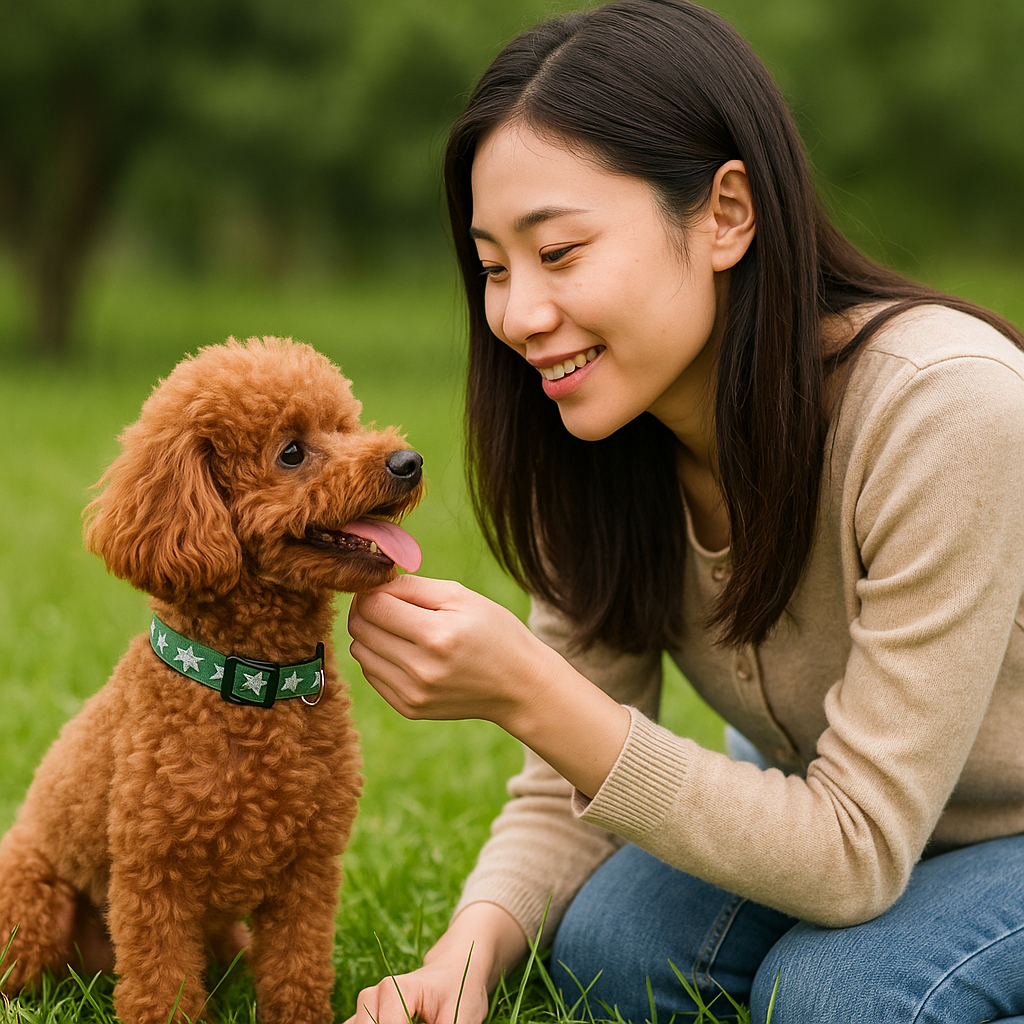
Summary
Select based on safety, comfort, and your puppy's individual requirements, rather than merely following trends or aesthetics.
Cindy Long is the Sales Manager of Raysunpets and a pet lover with over 12 years of experience in exporting pet products. She specializes in providing customized dog chest carriers, leashes and pet accessory solutions for the European and American markets, always focusing on the real needs of customers and pets, and is committed to creating high-quality, practical and comfortable products that allow fur kids to live happier lives.

